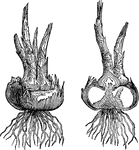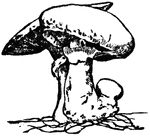
Toad-stool
"Many cells, but without differentiation into stem and leaf; growing horizontally in spreading shoots…

Hydrometer
Fahrenheit's Hydrometer, is generally constructed of glass, and differs from Nicholson's in having at…
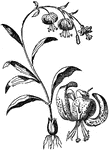
Tiger Lily
An ornamental plant of the genius lilium, characterized by an erect stem from a scaly bulb, numerous…

Lotus Design
Very much resembles our pond lily with the exception that the color is of a brilliant purple on the…
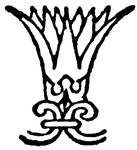
Lotus Design
Very much resembles our pond lily with the exception that the color is of a brilliant purple on the…

Lotus Design
Very much resembles our pond lily with the exception that the color is of a brilliant purple on the…

Lotus Design
Very much resembles our pond lily with the exception that the color is of a brilliant purple on the…

Lotus Design
Very much resembles our pond lily with the exception that the color is of a brilliant purple on the…
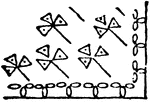
Rhodian or Lily Design
Composed of small flowers with three triangular petals and a long stem. Has the appearance somewhat…
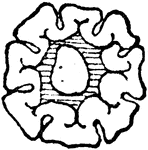
Rhodian or Lily Design
Composed of small flowers with three triangular petals and a long stem. Has the appearance somewhat…

Rhodian or Lily Design
Composed of small flowers with three triangular petals and a long stem. Has the appearance somewhat…
Rhodian or Lily Design
Composed of small flowers with three triangular petals and a long stem. Has the appearance somewhat…

Tree Design
Sometimes called the tree of life. Always associated with religious belief. It symbolizes Divine power…
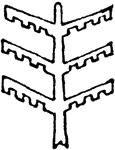
Tree Design
Sometimes called the tree of life. Always associated with religious belief. It symbolizes Divine power…
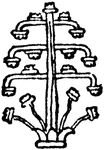
Tree Design
Sometimes called the tree of life. Always associated with religious belief. It symbolizes Divine power…
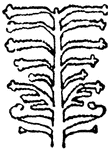
Tree Design
Sometimes called the tree of life. Always associated with religious belief. It symbolizes Divine power…
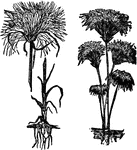
Papyrus
A genus of rushlike plants of the sedge family, growing in marshy places from root-stalks. The stem…

Peanut
A trailing plant of the bean family, bearing a hairy stem, small yellow flowers, and two-paired primate…
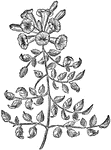
Trumpet Flower
The popular name of several flowering vines, which have a woody stem and bear flowers formed like a…
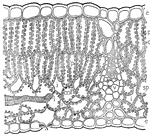
Epidermis
This illustration shows a stem of a plant. e; epidermis; s, stoma; p, palisade mesophyll; ch, chloroplast;…

Corn Stem
This illustration shows the cross-section of a single vascular bundle of corn stem: ph, phloem; x, small…
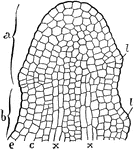
Growing Stem
This illustration shows the longitudinal section of the tip of a growing stem: e, epidermis extending…
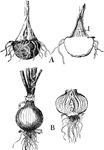
Onion
This illustration shows the shortened types of stems: A, corm of jack-in-the-pulpit. At left surface…
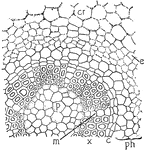
Botrychium
This illustration shows the cross-section of a stem of Botrychium: p, pith; x, xylem; m, ray; c, cambium;…
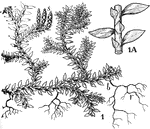
Selaginella
This illustration shows a common cultivated Selaginella: I, habit of the plant-s, strobili; b, a branch…

Lepidium
This illustration shows stages in the germination of the gametospore of Lepidium, sectional view: A,…
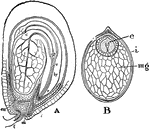
Dicotylendonous
This illustration shows the structure of dicotyledonous seeds: A, nearly mature seed of Lepidium. The…
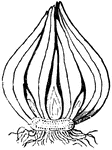
Tulip
This illustration shows a verticle section of the bulb of te tulip, showing its stem (a) and buds (b,…
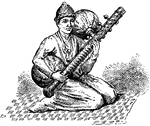
Vina
A stringed instrument used in Carnatic music. The vina is played by sitting cross-legged and holding…

Door Palm
A type of palm having repeatedly branched stem, each branch terminating in a tuft of large fan shaped…

Paramecium
"Paramecium in optical section. A, anterior end; c, tilia; e.d., ectosarc; e.n., endosarc; f.v., food…
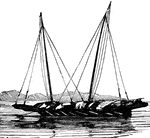
Pindjajap
A boat of Sumatra and the Malay archipelago, with from one to three masts, generally two, carrying square…

Ivy
The common ivy is a wellknown native of Britian and most parts of Europe and some parts of America.…

Faraday Experiment
"Faraday used in his experiments two identical pieces of apparatus, which were vertually two spherical…
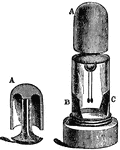
Cavallos Electroscope
"Cavallo's electroscope embodies the double pendulum principle. It consists of two fine silver wires…

Bennets Electroscope
"The gold leaves are gummed on the two sides of a flat piece of metal carried by a stout stem, which…
Henleys Electrometer
"The electrometer of Henley, sometimes called Henley's quadrant Henley electrometer, may be taken as…

Colony of Pennatula phosphorea
"Colony of Pennatula phosphorea from the metarachidial aspect. p, The peduncle. B, Section…

Yucca
"A plant may be operated on wherever the stem has become firm and woody; the top will not fail to make…

Single Eye
"This mode of propagation is performed by cutting the branches into short lengths, each containing one…

Tumbler Needle
"An improvement of great importance in the hosiery trade was effected through the invention of the tumbler…

Hydromedusa
"Diagram showing possible modifications of persons of a gymnoblastic Hydromedusa. a, hydrocaulus (stem);…

Hydromedusa
"Diagram showing possible modifications of the persons of a Calyptoblastic Hydromedusa. a, hydrocaulus…

Siphonophora
"Diagram showing possible modifications of medusiform and hydriform persons of a colony of Siphonophora.…
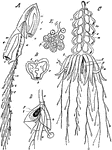
Siphonophora
"Floating colonies of Siphonophora. A, Diphyes campanulata. B, A group of appendages from the stem of…
Regnaults Hygrometer
"It consists of a glass tube or capsule A, having on the bottom and a little way up a highly polished…

Allaria Officinalis
"Allaria officinalis. a, upper part of stem, with leaves and flowers; b, extremity of a branch, in fruit."…
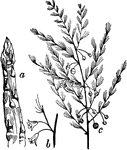
Asparagus
"Asparagus. a, a young shoot; b, flowers; c, the upper end of a stem, showing branches, leaves, and…

Astrocaryum
"A genus of Palms, of which about sixeen species are known, natives of tropical America, remarkable…
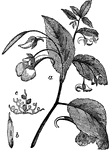
Balsam
"Balsam (Impatiens Noli-me-tangere). a, top of stem with leaves and flowers; b, ripe fruit unopened;…

Batatas
"A perennial plant with long creeping stems, heart-shaped leaves on long stalks, and variously lobed,…

Convolvulus
"Convolvulus: a, part of stem with leaves and flower; b, a flower-stalk and flower, the corolla and…
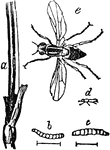
Corn Fly
"Corn Fly (Chlorops taeniopus): a, a portion of a culm or stem of wheat with swollen joint, caused by…
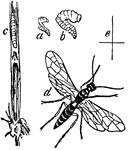
Corn Sawfly
"Corn Sawfly: a, maggot, natural size; b, maggot, magnified; c, the maggot in its ear in the stem of…
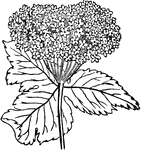
Cow Parsnip
"A genus of plants of the natural order Umbelliferae, having petals bent in at the middle, and flat…
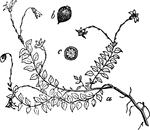
Cranberry
"Cranberry (Vaccinium palustris): a, part of stem and branches, with roots, leaves, and flowers; b,…
